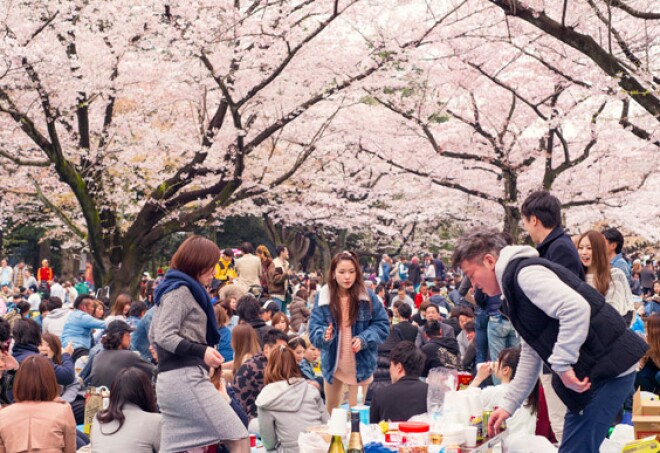The Perfect Day in Tokyo
Only one day available to see Tokyo? You can still get a hearty taste of what makes the city so interesting. From the traditional side of Tokyo--Asakusa temples--to the city’s very modern side--Shibuya crossing. And stroll through Yoyogi and Ueno Parks, each with their own unique attractions. And, of course, there will be plenty of food along the way.
2-chōme-8-1 Nishishinjuku, Shinjuku City, Tōkyō-to 163-8001, Japan
View of Tokyo at dusk as seen from the 54th floor observation deck of the Tokyo Metropolitan Government Building in Nishi-shinjuku. Admission to the observatory is free and well worth it for a fantastic, sweeping view of the Tokyo skyline.
2−3−1
Touring Tokyo via Rickshaw is something I never thought I would do. For whatever reason it always seemed wrong to have a man standing where a horse would be in other cultures. But then again, every country is different and I soon learned that this was a popular, albeit expensive, form of transportation for tourists. That said, I thoroughly enjoyed my thirty minute ride and I was surprised how much information my guide presented. I was also impressed by his physical fitness level but that probably goes without saying. The area surrounding Asakusa Shrine is perhaps the most popular part of Tokyo and it was thrilling to see scenes of local life while taking photos from my rickshaw seat.
3-chōme-38-1 Shinjuku, Shinjuku City, Tōkyō-to 160-0022, Japan
I had one free night in Tokyo—only one chance to connect with a Japanese acquaintance from a dive trip on Midway Atoll 10 years earlier. Our mutual friend, Shintaido master Haruyoshi Fugaku Ito, suggested we meet at the Shinjuku rail station and walk around the corner to Fukuhachi (“Happy Eight”) in the district’s legendary yakitori alley (“Omoide Yokocho,” which apparently translates as something less savory). Operated for decades by Ito’s old friends Kazuko and Hatsumi Muraoka, Fukuhachi is a classic, serving grilled skewers of various meats, organs, and vegetables to mostly locals. Because of the connection through friendship, we were able to slip down a sub-alley and enter through the rear, squeeze ourselves into the back corner, and eat round after round of yakitori, washed down with lots of cold beer, and lots of laughs—a world apart from the supermodern high-rise glitz of the neighborhood beyond the alley.
2-1 Yoyogikamizonochō, Shibuya-ku, Tōkyō-to 151-0052, Japan
To celebrate and honor the sakura,the Japanese hold hanami parties by picnicking under the blooming trees from morning through evening. If you have the opportunity to visit Japan during this period, you’ll witness thousands of people gather in parks, socializing over sake, tea, and bento boxes. Many local department stores and restaurants will even sell special edible treats created especially for this event.
1 Chome-9 Marunouchi, Chiyoda City, Tokyo 100-0005, Japan
Japan has some of the fastest, most reliable trains in the world. One measure of how much locals appreciate them is the glee in kids’ faces when a Shinkansen glides past their commuter train. Or they line up in front of the sloped nose of a parked bullet train for a photo before taking off on a trip. That excitement has naturally created a market for train souvenirs. You can find socks, shoes, even chopsticks shaped like any number of specific Shinkansen trains. Local train lines also sell their own branded train gear across Japan. The Shinkansen souvenirs are all over Tokyo Station, but a big cluster of them can be found near the underground Yaesu central exit. Leave the turnstiles, and the omiyage shop is immediately on the left.














